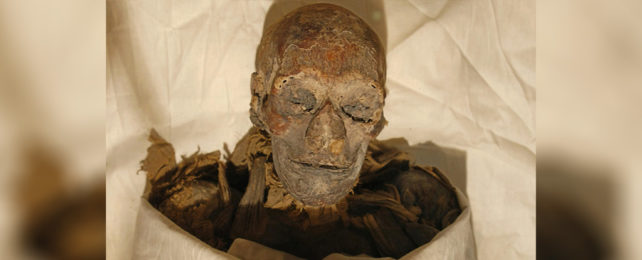Mummification may never have been intended to preserve the bodies of ancient Egyptians after death, experts say, a sharp contrast to the popular understanding of the practice.
An increasing number of archaeologists say that the preservative effects of mummification were likely accidental and blame early modern Egyptologists for propagating a misunderstanding based on little evidence.
Instead, the theory goes, mummification was meant to alter the bodies in a way that didn't rely on the popular theory that the bodies would become reanimated in an afterlife.
Instead, the experts say, Egyptians intended to turn their pharaohs into statues, works of art with religious significance.
The Egyptologists advancing this view say that the Victorians who first studied mummies concluded that preservation was the aim due to their own macabre fascination with the afterlife.
The approach suggests that Egyptians believed kings and queens were living gods, and that turning their bodies into statues after death was a way to restore their rightful form.
The golden masks found in the sarcophagi of royals would then be idealized, god-like versions of the deceased, rather than lifelike portraits, these Egyptologists say.
"It's a subtle distinction, but it's an important one," according to Campbell Price, a curator at the Manchester Museum in the UK.
"This idea that the spirit returns to the body, or in some sense animates the body, is not as explicitly articulated as you might imagine," Price said in an interview with Insider.
The approach is explored in the upcoming "Golden Mummies of Egypt" exhibition, which opens at the Manchester Museum in February. Price wrote a book accompanying it.
One of the arguments to support this theory is that mummies of some of the prominent ruling classes do not seem much concerned with preservation.
King Tutankhamun's body, for instance, was found stuck to the bottom of his coffin.
"It's almost as if, to read modern accounts, the mummification was botched, the ancient Egyptians didn't know what they were doing, and thus he wasn't well preserved," said Price.
Under the alternate theory, he supports, "producing a lifelike image, recognizable image, actually was never the intention in the first place," Price said.
Statues were seen by ancient Egyptians as godly.
"It seems that there's the world of the living and people who go about their daily lives. And then there's the world of images and representation, statues, reliefs, and paintings. That is not just an idealized version of Egypt – it's an image of gods, a kind of a statue world," said Price.
The archaeological record suggests statues of gods were anointed with oils and perfumes. They were also sometimes wrapped in linens, so it could be the bandages were thought to confer some sort of divinity.
By putting organs in canopic jars (jars adorned with the heads of gods) during the embalming process, Egyptians may have intended to imbue them with the godly spirit of the deceased royal, per Price, rather than keeping them handy for the afterlife.
However, not everybody agrees that the preservation aspect of mummification should be cast away.
"The physical preservation of the body was extremely important. There's no question of that," Stephen Buckley, an archaeologist and analytical chemist at the University of York, told Insider.
Some mummies do indeed look statue-like, such as Tutankhamun, Amenhotep III, and Akhenaten.
But others, Buckley said, like Tuthmosis III, Tuthmosis IV, Amenhotep II, and Queen Tyi were mummified to look more "sleep-like," which suggests a closer concern with the physical body inside.
The imagery included some imperfections, "perhaps so the soul could recognize themselves and therefore have a 'home' to return to periodically," he said.
Buckley conceded that mummification was not only about preservation, but said that discounting it completely would be "to miss the point."
But if Price is right, then how did we get it so wrong?
It may come down to the Victorians and their ideas of life after death.
"A lot of what we say when we describe ancient Egypt is less about what actually happened in ancient Egypt and more about the assumptions of Victorian upper-middle-class white, cis-gendered, bearded men," said Price.
"As so often those interpretations stuck and they were repeated and repeated and repeated," said Price.
"I think there's a lot of unthinking to be done."
This article was originally published by Business Insider.
More from Business Insider: